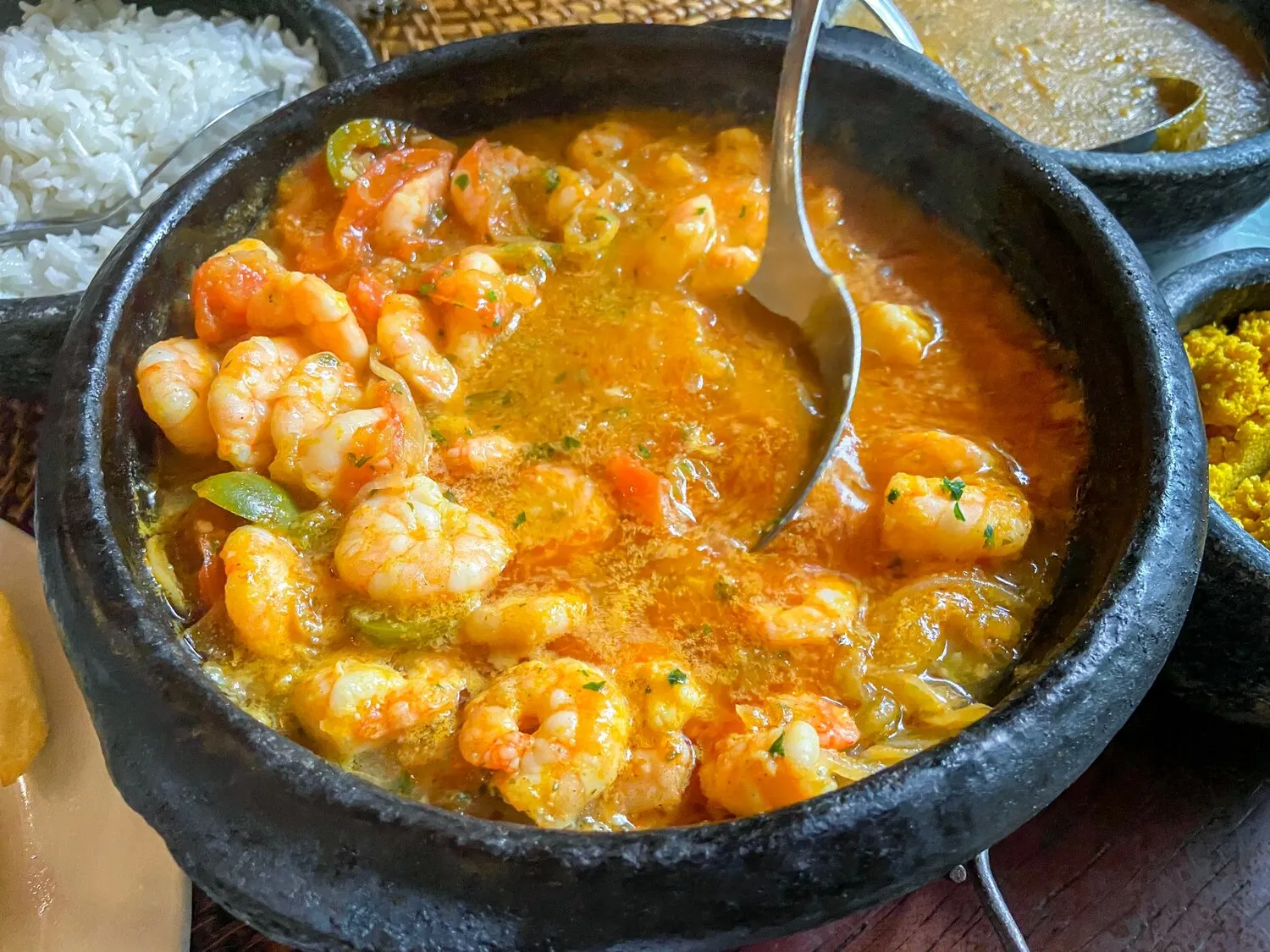
Moqueca de Camarão
Camarões flambados ao conhaque, puxados no azeite de dendê com pimentões e tomate. Acompanha arroz branco e pirão de camarão.
Nutrition Facts
* The % Daily Value (DV) tells you how much a nutrient in a serving of food contributes to a daily diet. 2,000 calories a day is used for general nutrition advice.
Coco Bambu Santo André: Peixe, Camarão, Carnes, Lagosta, Vinhos, Chopp, Delivery
Moqueca's history is intertwined with the indigenous, African, and Portuguese influences in Brazilian cuisine. Indigenous peoples of Brazil were cooking fish stews long before the arrival of Europeans. African slaves brought ingredients and cooking techniques, particularly the use of palm oil (azeite de dendê). The Portuguese contributed ingredients and adapted the dish to their tastes.
Moqueca is more than just a dish; it's a symbol of Brazilian coastal culture, particularly in the states of Bahia and Espírito Santo. It represents communal dining and celebration.
Regional Variations
While the essence of moqueca remains the same, regional variations exist. Moqueca Capixaba (from Espírito Santo) typically uses annatto instead of dendê oil, resulting in a milder flavor and lighter color. Moqueca Baiana (from Bahia) uses dendê oil and coconut milk, making it richer and more flavorful.
Celebratory Dish
Moqueca is often served during special occasions and gatherings, signifying hospitality and abundance. Sharing a large pot of moqueca is a social event, bringing people together around the table.
Connection to the Sea
As a seafood-based dish, Moqueca highlights the importance of the ocean in the Brazilian coastal regions. Fresh, locally sourced seafood is crucial to the authenticity and flavor of the dish.
Moqueca de Camarão offers a complex flavor profile: savory, slightly sweet, rich, and spicy, with a unique blend of seafood, aromatics, and distinctive Brazilian ingredients.
The dish combines the sweetness of shrimp with the aromatic sweetness of bell peppers and tomatoes. The azeite de dendê provides a unique, slightly earthy, and subtly bitter flavor, while the conhaque adds depth and warmth. Spices like chili peppers contribute heat. The pirão, made from the moqueca's broth and cassava flour, adds a thick, savory accompaniment that complements the delicate shrimp. The rice provides a neutral base to balance the richness.
Freshness of Ingredients
Use the freshest shrimp available for the best flavor. The quality of the seafood greatly impacts the overall taste of the dish. Look for shrimp with firm flesh and a fresh sea scent.
Azeite de Dendê Quality
Azeite de dendê is a key ingredient, but its quality can vary. Look for a deep orange color and a rich aroma. Be mindful of the quantity, as too much can overpower the other flavors.
Layering Flavors
Build the flavors gradually. Start by sautéing the aromatics (onions, garlic, bell peppers) before adding the tomatoes and shrimp. Allow each layer of flavor to develop before adding the next ingredient.
Gentle Cooking
Avoid overcooking the shrimp, as it can become tough and rubbery. Cook it just until it turns pink and opaque. A gentle simmer is ideal for preserving the shrimp's delicate texture.
Explore additional Moqueca dishes and restaurants
Explore MoquecaDiscover top dining spots and culinary experiences in Santo André.
Explore Santo AndréLearn more about the food culture, restaurant scene, and culinary heritage of Brazil.
Explore Brazil